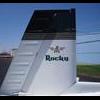-
Members Online
- sully
- IvanP
- mike_elliott
- Stubby
- bluehighwayflyer
- Pinecone
- ta2too
- DonMuncy
- Ibra
- Fritz1
- EKoS
- natdm
- takair
- bavareze
- eman1200
- gmonnig
- Stealth Mooney
- atpdave
- 802flyer
- Glen Davis
- aviatoreb
- cferr59
- warbingtonmasonry
- pirate
- glbtrottr
- Hoeschen
- Greg Ellis
- Parker_Woodruff
- Lax291
- TCC
- UteM20F
- AndreiC
- phxcobraz
- Chester
- Marcopolo


Recommended Posts
Join the conversation
You can post now and register later. If you have an account, sign in now to post with your account.